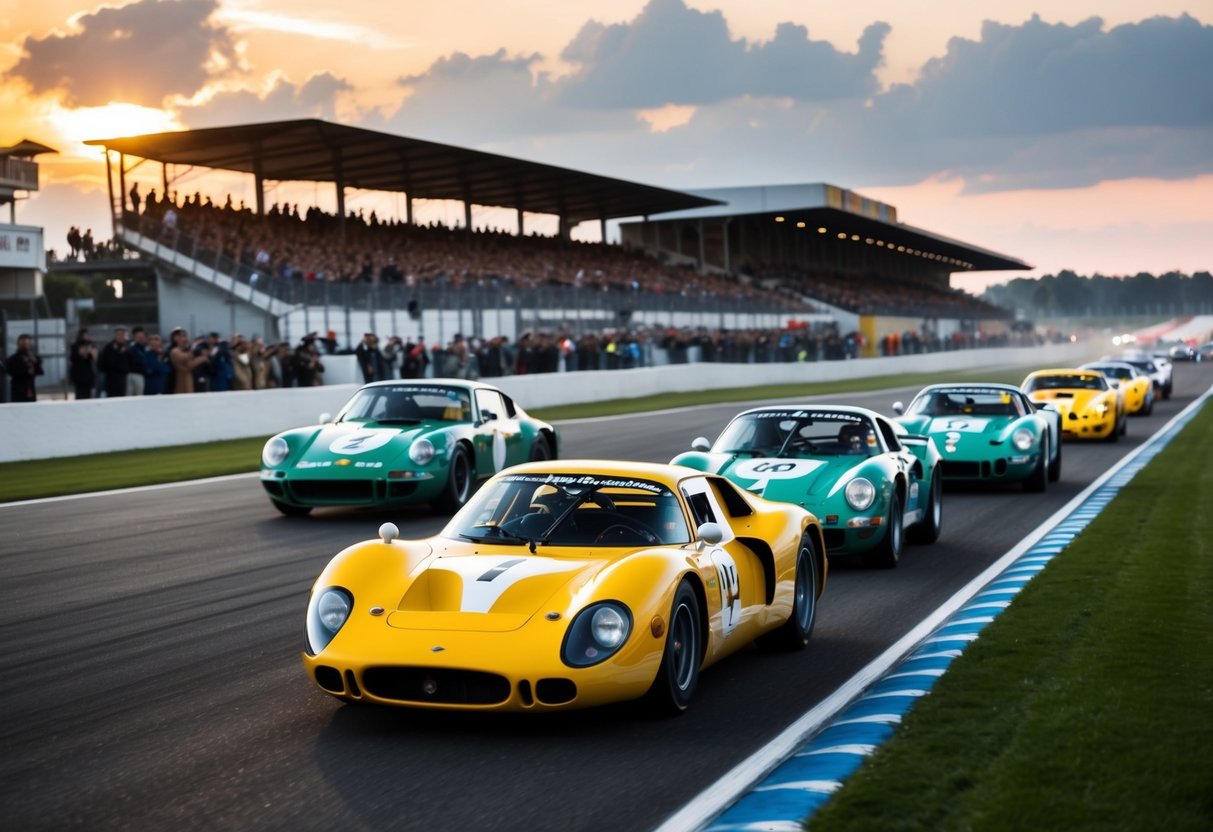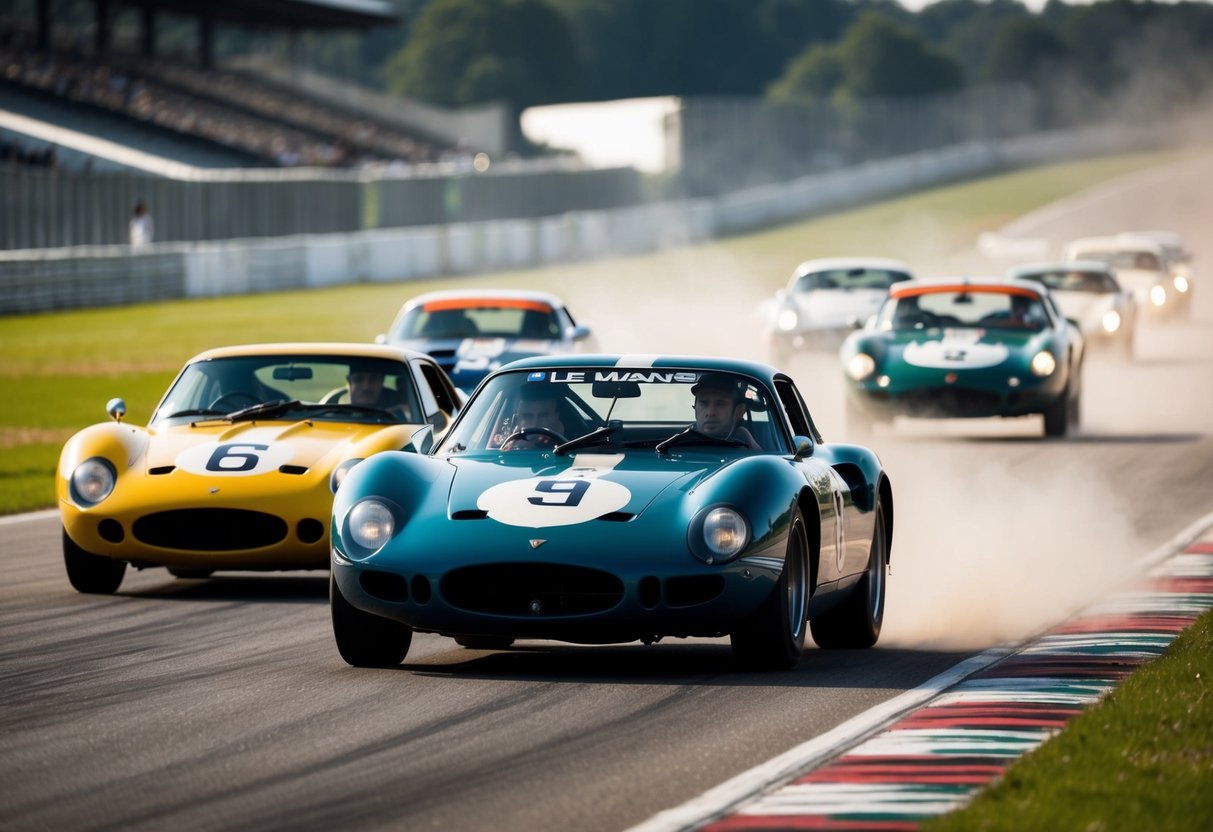
The Mulsanne Straight: Battleground of Speed
The Mulsanne Straight is a legendary stretch of road at the Circuit de la Sarthe, where the highest speeds in racing history have been recorded. It is a place where aerodynamics and raw power meet. Cars like the Porsche 917 highlighted these dynamics, with its streamlined design engineered to survive the punishing demands of the straight.
During the 1970s, the Porsche 917 regularly exceeded speeds over 240 mph here. The focus on maximizing top speed without sacrificing control presents constant engineering challenges. McLaren’s F1 and Jaguar’s D-Type continue this tradition, creating memorable races defined by maintaining vehicle stability at incredible speeds.
Breaking Records and Setting Standards
Record-breaking performances at Le Mans have always set a benchmark for speed and innovation in motorsports. The Peugeot 905 is a prime example, achieving success in the early 1990s through advanced materials and design that prioritized lightweight and aerodynamic efficiency. It established standards in how future race cars would be developed.
Beyond just victory, performance at Le Mans is a showcase of technological progression. Every manufacturer from Jaguar to McLaren has left a lasting impact through innovations developed to outpace rivals. The combination of high-speed races and cutting-edge technology defines the spirit of Le Mans in the ongoing quest for speed enhancement.
Legendary Drivers of Le Mans

The rich history of Le Mans is filled with standout individuals who have left a significant impact. These drivers dominated the track, exhibiting skill and determination that carved their names into motorsports history.
Tom Kristensen and the King of Le Mans
Tom Kristensen is often recognized as the most successful driver in the history of Le Mans. Known as the “King of Le Mans,” Kristensen achieved an unprecedented record of nine overall victories. His career began with his first win in 1997 when he raced for Porsche, solidifying his reputation.
Kristensen’s methodical approach and adaptability to changing race conditions made him a remarkable competitor, appreciated by fans and fellow drivers alike. Beyond his record wins, his ability to work effectively with teams like Audi and Bentley demonstrated his prowess.
Consistently pushing boundaries, Kristensen set a standard in endurance racing that future drivers aspire to match. His legacy continues to inspire, reminding enthusiasts of what dedication can achieve in the motorsport world.
Other Heroes: Bell, Ickx, and Herrmann
Jacky Ickx is another legendary figure associated with Le Mans, boasting six victories. Often called “Monsieur Le Mans,” Ickx’s precise driving and resilience were key elements of his success. His partnership with Porsche led to numerous triumphs, leaving a lasting impression.
Derek Bell, known for his technical skill and composure on the track, secured five Le Mans victories. Racing alongside Ickx, Bell’s collaboration with Porsche frequently took center stage, highlighting his adaptability and experience.
Hans Herrmann, with a win in 1970, is revered for his role in Porsche’s first overall victory at Le Mans. His contributions to motorsports extend beyond his racing achievements, as he remains a respected figure in the racing community.
Together, these drivers shaped Le Mans’ legacy with their remarkable performances and dedication to excellence.
Technological Innovations Through Time
Throughout the history of Le Mans racing, technological advancements have played a crucial role in shaping the performance and success of legendary sports cars. From the introduction of disc brakes to the rise of hybrid and electric technologies, these innovations have driven the evolution of motorsport engineering.
Introduction of Disc Brakes and Other Innovations
Disc brakes marked a significant leap forward in automotive safety and performance. This innovation allowed drivers to decelerate more effectively, improving lap times and vehicle control. Jaguar, with its C-Type, was among the pioneers at Le Mans, showcasing this technology in the early 1950s.
The implementation of disc brakes set the stage for further developments, including advancements in aerodynamics and materials. Carbon-fiber composites and lightweight alloys became standard, enhancing speed and efficiency. Aerodynamic tweaks, like the addition of spoilers and diffusers, emerged to increase downforce and stability. These innovations collectively drove the technological narrative of Le Mans, enabling cars to handle more power and perform optimally under high-speed conditions.



